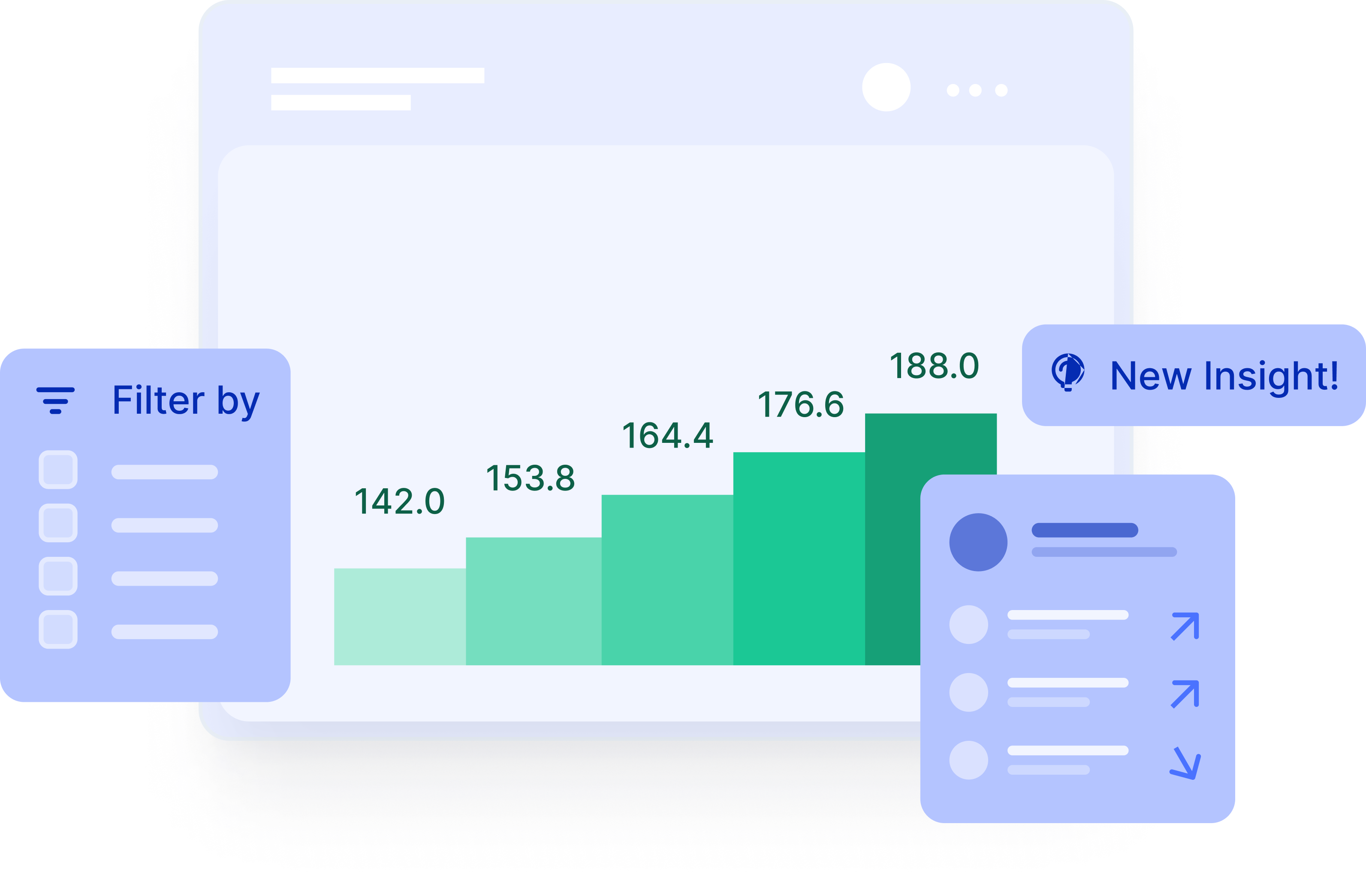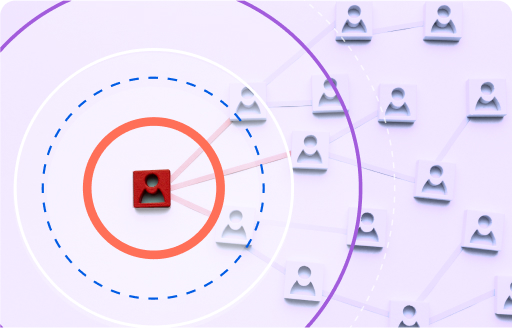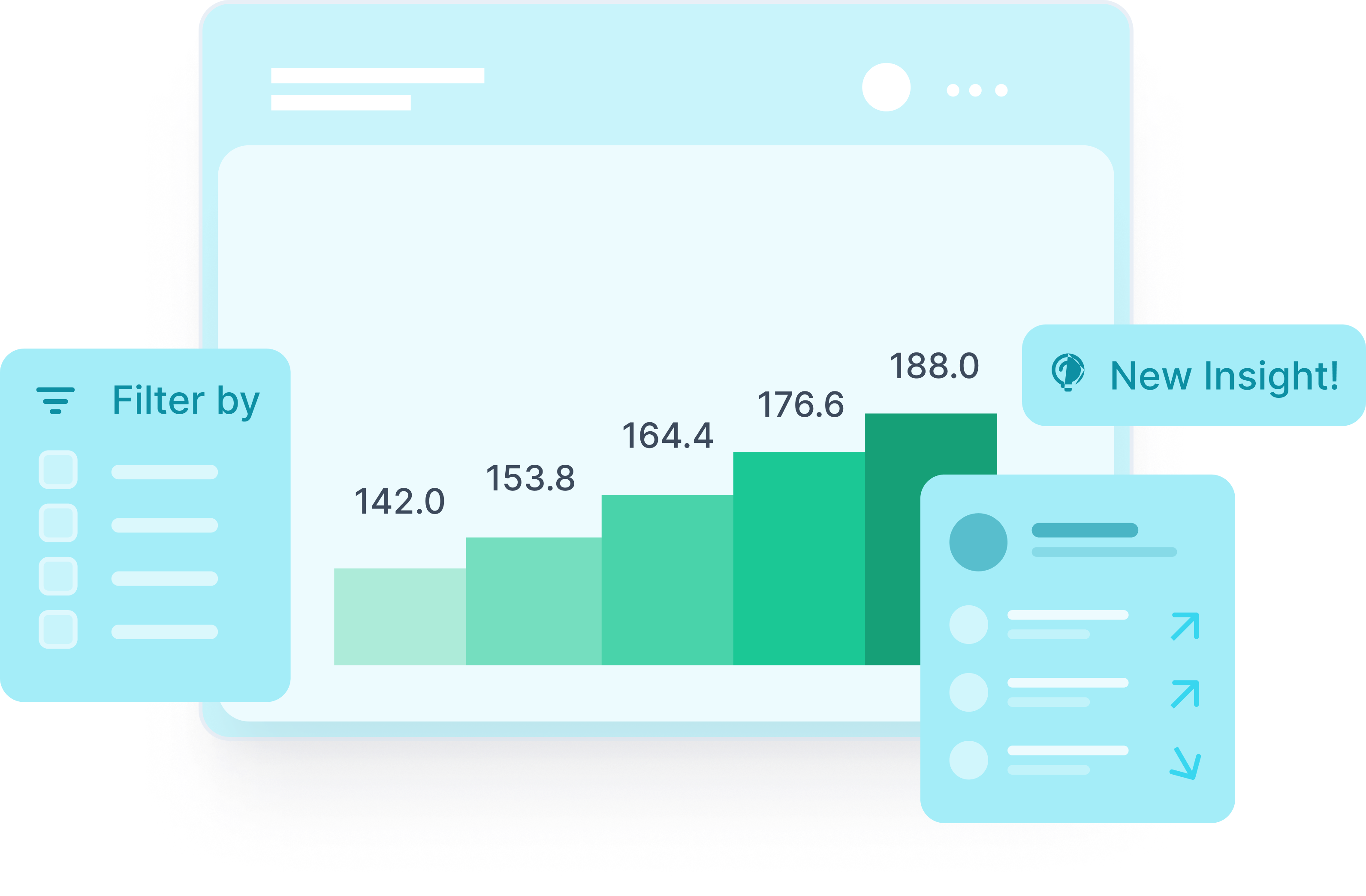Mastering Lead Conversion: Strategies for Turning Prospects into Customers

Co-Founder & CTO
As a concept, lead conversion is simple. A lead is anyone who shows interest in your company, likely providing their contact information to learn more about your company. Lead conversion is the process of turning a potential customer into a paying customer.
For example, imagine you recently visited the website of a company that sells clothing. You probably clicked around the website and browsed the different styles. If you found a few shirts you liked, you may have subscribed to the company newsletter or entered your email to get a discount code.
At the point of entering your contact information, you are considered a lead. Now that the company has your contact information, they can nurture you and influence your purchase decisions, eventually converting you into a paying customer.
While the concept of converting leads to customers is simple, the path to track, measure, and optimize lead conversion can be complex. From the point of view of the Revenue Operations (RevOps) team, the tracking and analysis of lead conversion helps SaaS businesses make the most of the visitors that come through their door. If lead conversion rates are low, the RevOps team can evaluate each stage of the lead process to pinpoint where improvements need to be made.

Understanding the Lead Conversion Process
For most SaaS companies there are five stages of lead conversion. These stages represent the lead’s likelihood to become a customer. Included below are average conversion rates per stage, but please note that conversion rates vary greatly between industry and business size. The conversion rates below are based on data from FirstPageSage that focuses on small to midsize businesses in B2B SaaS.
- Visitor to Lead: The first stage is getting a lead in the door. Whether it’s website visitors, social media followers, or event attendees, when a person submits their information to your company, they are added to your system as a lead.
1.4% of website visitors become leads - Lead to MQL: The process from lead to MQL often involves seeing how engaged the lead is in your marketing efforts. The more engaged a lead is, the more likely they’ll reach the threshold to become an MQL.
41% of leads become MQLs - MQL to SAL: To convert from an MQL to an SAL can require a lot of nurturing. MQLs are only converted into SALs once they show intent to purchase, such as requesting a demo, contacting sales, or asking about pricing.
39% of MQLs become SALs - SAL to Opportunity: Once the lead turns into an SAL, they are in the sales team's hands.
42% of SQLs become opportunities - Opportunity to Customer: The opportunity stage is when a potential customer has agreed to consider your solution. It’s up to the sales team to take the lead to conversion.
39% of opportunities become closed-won deals
Key Metrics for Measuring Lead Conversion
To calculate lead conversion, you should keep an eye on a few key metrics. You’ll want to understand how leads are converting between each stage of the process while also having a pulse on overall lead conversion.
Bird’s eye view of lead conversion
- Lead Conversion Rate (LCR): The percentage of leads that become paying customers within a specified time period.
- Leads created: The total number of leads created within a specific time period.
- Leads accepted: The total number of leads accepted by the sales team within a given time period.
Understanding each stage of the lead funnel
- Lead to MQL Conversion Rates: The percentage of new leads that convert into MQLs within a specified time period.
- MQL to SAL Conversion Rate: The percentage of marketing leads that are accepted by sales and converted into sales opportunities.
- Lead to SAL Conversion Rate: The percentage of leads that were accepted by sales and converted into opportunities.
- MQL-to-Customer Win Rate: The number of MQLs that ultimately became paying customers.
Review lead cycle length
- Average MQL-to-Opportunity Duration: The average number of days it takes for an MQL to be accepted by sales.
- Average MQL-to-SAL Duration: The average number of days for an MQL to be accepted by sales.
Tracking each of these data points individually would be challenging—luckily there are tools that can simplify lead conversion tracking. Using the lead conversion template within Sightfull’s revenue analytics platform, you can integrate your data across tools to get an overview of lead conversion at your company. Drill down to specific data points, such as MQL to SAL conversion rates or average MQL to opportunity duration, to dig into the details.
Access revenue analysis templates

Strategies for Optimizing Lead Conversion
As a member of the RevOps team, optimizing lead conversion can help you improve marketing and sales pipeline, streamline the sales funnel, and improve forecasting for the year. Explore how you can help marketing and sales teams optimize the lead conversion process.
Nurturing Leads: Building Relationships and Engagement
One of the best ways to move leads from stage to stage is to nurture the leads through targeted segmentation.
Typically, the contact information you receive through a lead form is an email address, so explore how you can personalize your email marketing to keep your leads interested. Once you receive your lead’s contact information, start segmenting them according to relevant characteristics. This could be by industry, title/role, or product interest.
The more that you can serve them content that aligns with their interests and behaviors, the more likely they’ll be to further explore your product.
Lead Scoring: Prioritizing Leads for Effective Conversion
A lead that lands on your website and submits their email to download a guide is not as equally invested in your offerings as someone who signs up for a webinar, subscribes to your newsletter, and reads multiple blog posts.
Typically, leads that are more engaged with your marketing material have a higher intent to purchase your product. This is where lead scoring, the act of assigning a score to each lead according to their background and engagement levels can be incredibly helpful.
Here’s how it works.
- Each lead is screened and assigned a score according to how well they match your company’s ideal customer profile. This can include information like industry and title. (A lead that matches your customer profile shouldn’t be considered an MQL quite yet–you still don’t know if they are truly interested in your company’s product or services.)
- Track the lead’s engagement with your marketing materials. As they download guides, attend webinars, or read blog articles, they are assigned additional points.
- Once they reach a certain point threshold (say 100 points), the lead is considered an MQL.
This process can help you prioritize the leads that are more engaged and interested in your company’s products.

Optimize Lead Capture Forms and Landing Pages
To improve lead capture rates, marketing teams should reduce as much friction as possible on lead forms and landing pages.
- Shorten form fields: Take a look at your capture forms. Are there more than 5 fields? More than 8? Too many form fields can deter visitors from entering their information. Audit the number of form fields down to what’s absolutely necessary. Typically, using 3-5 form fields is the sweet spot.
- Auto populate information: If someone is already in your database, they shouldn’t need to add in their information. By using cookies, you can auto populate a known visitor’s information to reduce friction and enhance their experience.
- Optimize for mobile: With 56% of global traffic on mobile devices, a good percentage of visitors are likely discovering your landing page on their mobile device. Create landing pages that look great on mobile as well as desktop.
- A/B test: Test different elements of your landing page, such as headings, CTAs, and form fields to learn what configuration has the highest likelihood of conversion.
Provide Value With High-Quality Content
Content needs to be perceived as valuable in order for a lead to submit their contact information. To create high-value content, consider:
- Creating proprietary content: One of the best ways to stand out among the crowd is to craft content unique to your company. Leverage your company’s data sets and internal subject matter experts to create content that only your company can offer. Develop gates guides and reports from this information to bring new leads into your pipeline.
- Offering exclusivity: Consider offering early bird access to premium content (such as a proprietary data report) to generate immediate captures. For in-person events or webinars, build a VIP experience and target people who meet specific criteria.
- Personalizing experiences: A visitor will find content more valuable if it matches the user’s interests. Segment and target your audience with content that aligns with their behavior and interests.
Align Your Messaging
With both marketing and sales teams participating in the journey of the lead, the messaging across the lead’s experience needs to be in sync. Whether a Business Development Representative is reaching out to potential clients or a marketing team member sends an email through the marketing automation system, the core value props of the company should be the same across teams and channels.
Utilize Social Proof and Testimonials
Customer reviews and testimonials are excellent social proof that can help your marketing and sales teams convert leads to customers. Customer stories such as video testimonials on social media can help marketing teams get more leads in the door. Simultaneously, the sales teams can use the testimonials to aid in their selling process and show the success other customers have had using your products.
Here are a few reasons why customer reviews and testimonials improve conversion.
Build credibility: By providing examples of other companies that have worked with you, you demonstrate that others have had positive experiences with your company.
Reduce uncertainty: Reading other customers' experiences can guide leads through the decision-making process, providing valuable insights and comparisons that increase their confidence in choosing your product or service.
Boost brand perception: Reviews and testimonials can shape how leads perceive your brand, associating it with positive attributes like reliability, quality, and customer satisfaction. The testimonials can also highlight key attributes that competitors may not have.
By understanding how users interact with your brand and serving them tailored messages, you can significantly increase your conversion rates. Combining retargeting and behavior based strategies can help you create personalized experiences for your users. Here are a few tactics to get you started:
Retarget users based on specific behaviors: Target website visitors who abandoned carts with special discount codes. Or, show product ads to users based on their browsing history.
Nurture leads with behavior-based email campaigns: Leads can be grouped by website engagement, email clicks, downloads, or purchase history. Send email sequences with relevant blog posts, ebooks, or product recommendations based on their interests and stage in the buyer's journey.
Optimize landing pages for different segments: Create targeted, dynamic landing pages with messaging and offers tailored to specific user groups. Showcase different product recommendations or call-to-actions based on the user’s interests and behavior.
Lead conversion template and metrics

Real-World Lead Conversion Examples
While tactics are helpful to read about it, real-world success stories can provide more tangible examples of conversion strategies. Here are a few examples from companies that have employed successful lead conversion strategies across a few different industries.
Nurture potential customers like Calendly
Calendly’s freemium model has limited features which allows users to experience the value before committing. Calendly nurtures free users with email marketing, helping them become more familiar with the product features.
Position your brand as an expert like HubSpot
HubSpot offers valuable educational content like ebooks and webinars, building trust and establishing themselves as thought leaders in the marketing space. Through their lead-gen assets, they not only gather new leads for their funnel but also position themselves as a marketing expert.
Gather social proof like Airbnb
Airbnb curates unique experiences and promotes local recommendations, going beyond finding an accommodation. This creates a memorable experience for guests
and motivates them to share their stories, attracting new leads through social proof. In fact, a recent feature of Airbnb is the ability to find guest favorites—the most loved stays according to guests.
Troubleshooting Low Lead Conversion Rates
Now that we have the strategies covered, let’s go over a few common challenges that can hinder lead conversion.
Wrong target audience
Low conversion rates are a sign that either you’re not targeting the right audience or they’re not being nurtured enough to move to the next stage. Take a look at your marketing initiatives—do they match your ideal customer profile? Is your sales team having success with this profile or does it need to be adjusted? Is there a particular stage where conversion drops? Answering these questions will help you troubleshoot the low conversion rates.
Poor quality leads
If there is a very low rate of MQL to SAL conversion, it’s likely that the quality of leads is low. The MQL criteria needs to be adjusted to ensure that the MQLs passed to sales are higher quality. This could include adjusting your lead scoring so that certain marketing initiatives receive fewer points.
Misalignment between sales and marketing teams
Misalignment on team priorities can wreak havoc on lead conversion, and ultimately, pipeline and revenue goals. Not only should teams create joint goals to help them march in the same direction, they should define those goals to ensure they’re speaking the same language. If the ultimate goal is to increase SALs, define in detail what an SAL is to your teams.
Leveraging Technology for Lead Conversion
When it comes to measuring and tracking lead conversion, there are a few tried and true tools you’ll want to have at your disposal.
CRM and Lead Management Software
Your CRM, such as Salesforce, should house all of your lead and customer data, helping you stay organized and keep track of all of the new leads entering your funnel.
Website Analytics
Analytics tools like Google Analytics can help you understand your website visitors’ journeys from visitor to lead and lead to customer. While heat mapping tools like Crazy Egg or Hotjar can show you how your site visitors are interacting with your pages.
Automation in Lead Nurturing and Follow-Ups
Marketing automation tools, like Marketo, can help you segment and personalize your marketing initiatives at scale. One of the best methods for nurturing leads is through email marketing, so look for a solution with robust email marketing capabilities.
Revenue Analytics for Insight-Driven Strategies
Revenue analytics platforms, like Sightfull can help you see the big picture. By integrating with your CRM and all of your data analytics tools, you can pull multiple sources of data together to create a holistic view of your lead conversion system.
Lead Conversion Key Takeaways
Measuring and optimizing lead conversion can help your company increase pipeline, improve the sales cycle, and ultimately, generate more revenue. Improving lead conversion is not always straightforward, so remember to use the tips and strategies from this article to guide you. If you have to choose just a few items to focus on, start with:
Measuring your conversion rates: Knowing where your cross-funnel conversion rates stand compared to industry standards will help you identify which areas need the most improvement. Tools like a revenue analytics platform can help you evaluate your lead generation and conversion rates.
Email marketing: As soon as a new lead enters your funnel, they should be welcomed with an email. Segment and nurture your leads, creating personalized email marketing experiences for each cohort. As shown in the example above, many successful brands use email marketing to help nurture their leads to the next stage.
Test and iterate: A/B test your landing pages, emails, and CTAs to see what resonates most with your potential customers and helps them convert. As your company grows and scales, your ideal customer may change and so may your lead conversion tactics. Continue to iterate upon and improve your lead conversion strategies.
To help you better understand lead conversion at each stage of the funnel, try Sightfull. Sightfull is a revenue analytics platform with pre-crafted templates to help you evaluate lead conversion with ease. We integrate with all of your existing tools in hours, not days, so you can start making data-informed decisions as soon as possible.
Answer important business questions!

FAQs
Why is lead conversion rate important?
Lead conversion rate helps you identify weaknesses in your lead conversion process by shedding light on which stages of the funnel are not converting as well as others. By increasing lead conversion rates, you can improve your company’s sales pipeline, enhance the customer experience, and drive additional revenue.
How can you increase your lead conversion rate?
There are many factors that can help you increase your lead conversion rate, including removing friction in the signup/purchase process, nurturing leads across each stage of the funnel using email marketing and by providing helpful resources, and personalizing the journey to each segment of customers.
What is a good lead conversion rate?
While lead conversion rates vary by industry and business size, the average conversion rate across industries is between 2-3%. An above average conversion rate is about 5% and a stellar conversion rate is above 10%.
Talk to an expert
Track your Sales Funnel Performance
Everything You Need to Know About Conversion
Utilize the best pre-built templates to identify which channels have lower lead conversion rates.

















